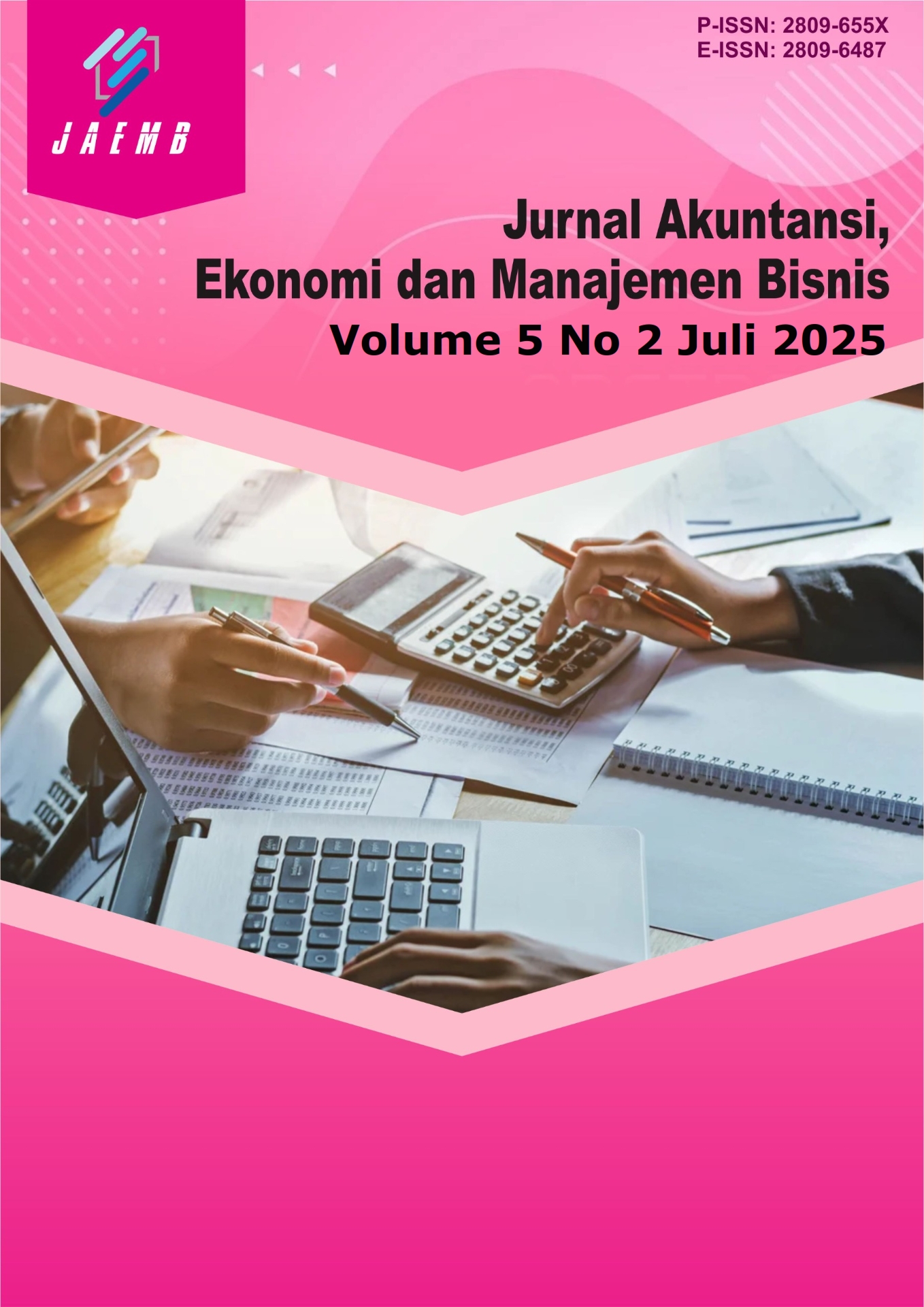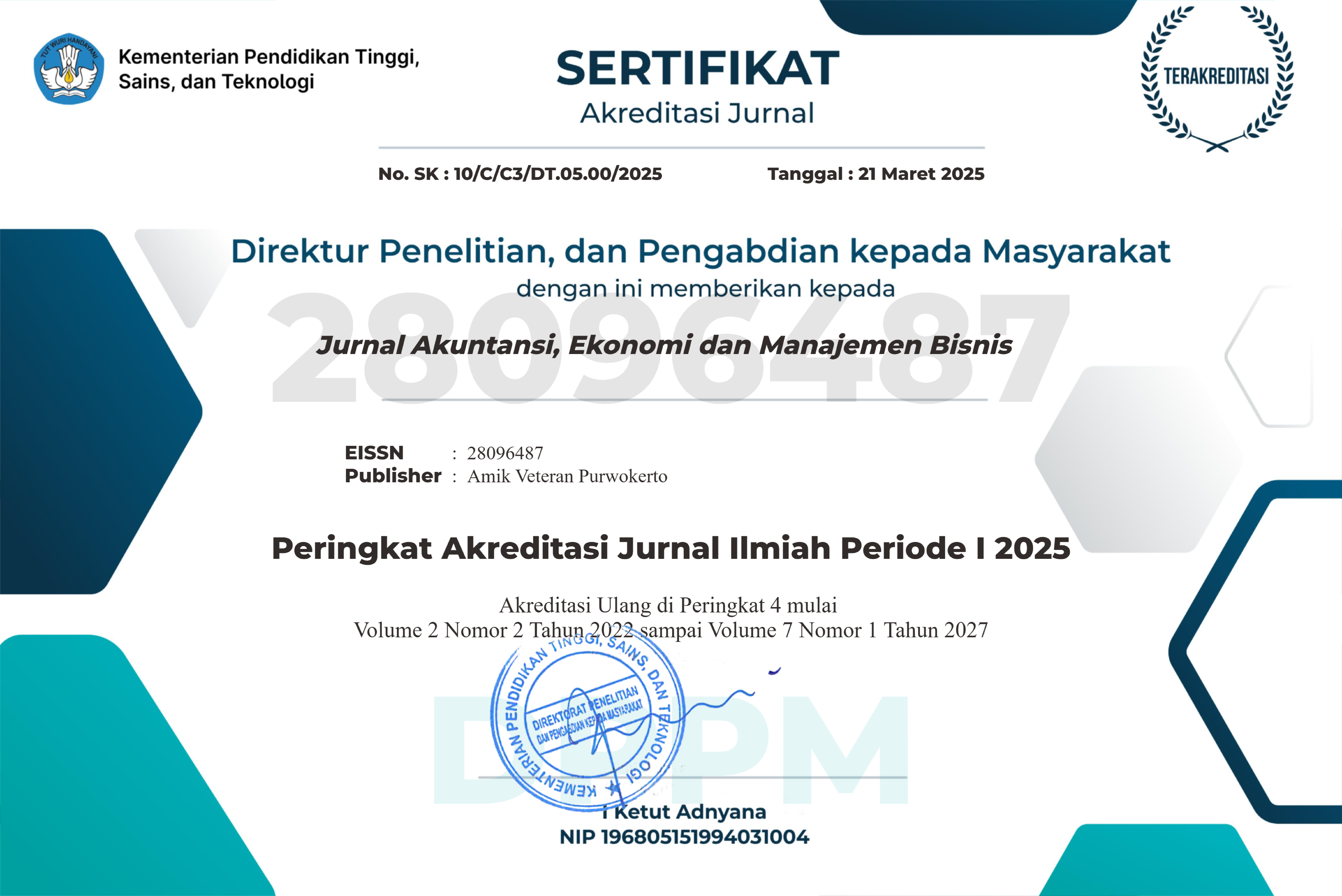Analisis Tingkat Pemahaman Akuntansi Pada Mahasiswa Akuntansi
DOI:
https://doi.org/10.55606/jaemb.v5i2.6770Keywords:
mahasiswa akuntansi, tingkat pemahaman, perbedaan angkatan, metode pembelajaran, motivasi belajarAbstract
This study examines the level of accounting comprehension among students in the Accounting Study Program at Universitas Tanjungpura from two different cohorts, namely 2022 and 2024. A descriptive quantitative approach was employed, with purposive sampling used to determine the sample. A total of 77 active students participated as respondents, consisting of 45 students from the 2022 cohort and 32 students from the 2024 cohort, all of whom had completed or were currently enrolled in basic accounting courses. The research instrument used was an online questionnaire with a Likert scale, covering three main indicators: understanding of basic accounting concepts, ability to prepare journals, and comprehension of financial statements. Data were analyzed using an independent t-test through SPSS version 26. The results revealed that the average comprehension score of students from the 2022 cohort was 61.80 (SD = 8.24), while the 2024 cohort scored an average of 58.19 (SD = 8.70). The t-value of 1.852 with a p-value of 0.068 indicates that the difference in scores was not statistically significant (p > 0.05). This suggests that the difference in entry year does not significantly affect the overall level of accounting comprehension. Instead, factors such as high learning motivation, the effectiveness of teaching methods, and students’ active participation during the learning process are presumed to have a greater impact. Therefore, these findings emphasize the importance of designing learning strategies that are more contextual, interactive, and aligned with the characteristics of today’s students.
References
[1] Arsyad, M., & Setyawan, D. (2021). Pengaruh Interaksi Dosen dan Mahasiswa terhadap Pemahaman Konsep Akuntansi. Jurnal Pendidikan Ekonomi, 9(2), 110–118.
[2 Felder, R. M., & Silverman, L. K. (1988). Learning and Teaching Styles in Engineering Education. Engineering Education, 78(7), 674-681.
[3] Fitriani, A. (2019). Pengaruh Latar Belakang Pendidikan terhadap Pemahaman Akuntansi Mahasiswa. Jurnal Akuntansi dan Keuangan, 5(2), 112–121.
[4] Harahap, S. S. (2016). Teori Akuntansi. Jakarta: Rajawali Pers.
[5] Mulyadi. (2014). Sistem Akuntansi. Jakarta: Salemba Empat.
[6] Nugroho, R., & Kartika, D. (2022). Pengaruh Penggunaan Media Simulasi Terhadap Pemahaman Akuntansi Mahasiswa. Jurnal Pen-didikan Ekonomi, 10(1), 55–65.
[7] Sanjaya, W. (2011). Strategi Pembelajaran Berorientasi Standar Proses Pendidikan. Jakarta: Kencana.
[8] Setiawan, R., & Nurhayati, E. (2020). Studi Perbandingan Pemahaman Akuntansi Mahasiswa Lulusan SMK dan SMA. Jurnal Pendidikan Akuntansi, 8(1), 33–45.
[9] Sudjana, N. (2005). Dasar-Dasar Proses Belajar Mengajar. Bandung: Sinar Baru Algensindo.
[10] Suwardjono. (2015). Teori Akuntansi: Perekayasaan Pelaporan Keuangan. Yogyakarta: BPFE-Yogyakarta.
[11] Susanti, N., & Rahman, F. (2021). Pengaruh Motivasi Belajar terhadap Pemahaman Akuntansi Mahasiswa. Jurnal Riset Akuntansi dan Bisnis, 6(3), 210–220.
[12] Widiyanti, L., & Nugroho, H. (2023). Aktivitas Kelas dan Pemahaman Mahasiswa dalam Mata Kuliah Akuntansi. Jurnal Inovasi Pen-didikan Ekonomi, 12(1), 78–85.
[13] Warren, C. S., Reeve, J. M., & Duchac, J. E. (2017). Accounting. Boston: Cengage Learning.
[14] Yuliani, T. (2022). Pengaruh Lama Studi terhadap Kemampuan Pemahaman Akuntansi. Jurnal Akuntansi Multiparadigma, 13(1), 45–56.
Downloads
Published
How to Cite
Issue
Section
License
Copyright (c) 2025 Jurnal Akuntansi, Ekonomi dan Manajemen Bisnis

This work is licensed under a Creative Commons Attribution-ShareAlike 4.0 International License.








